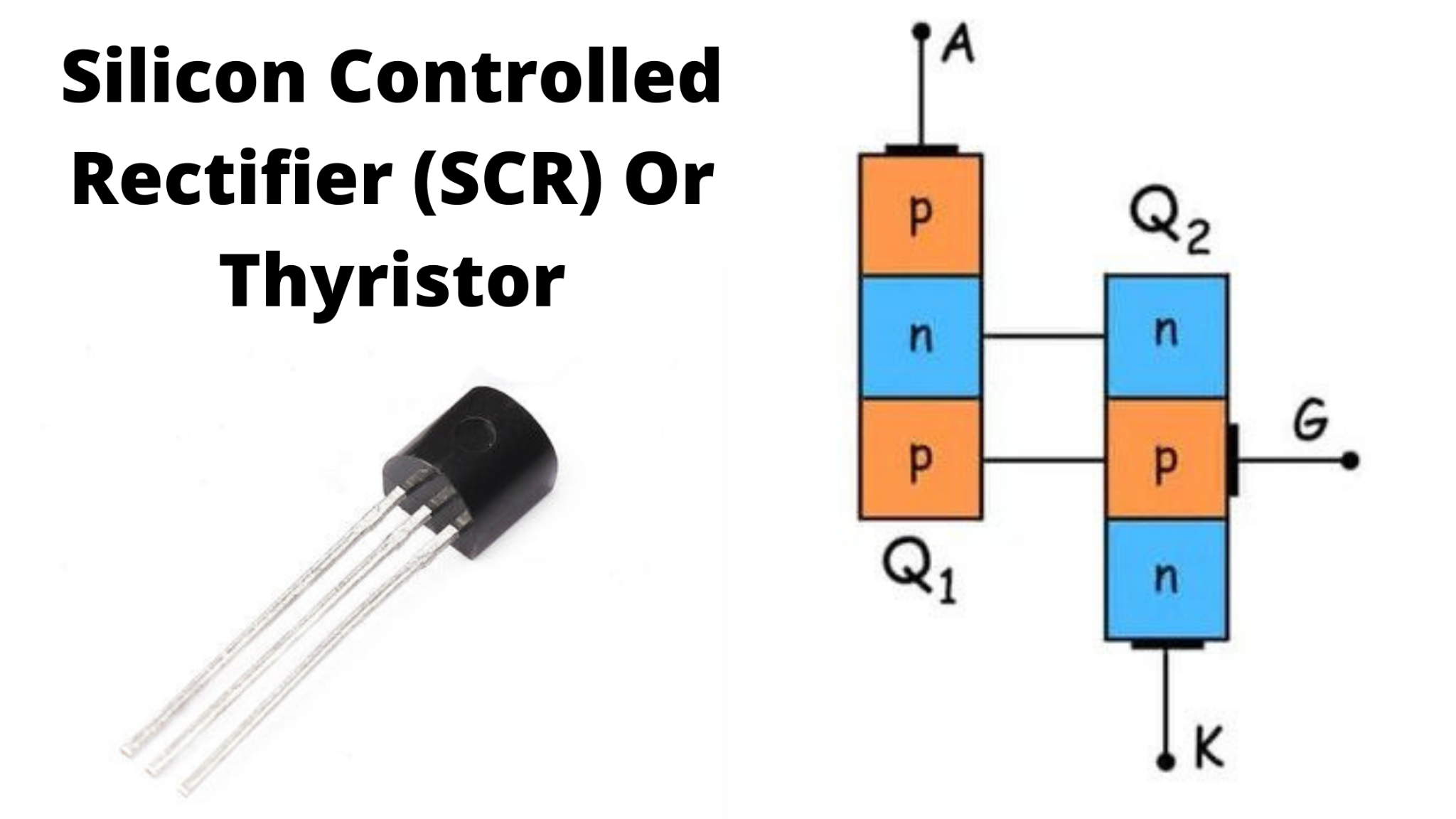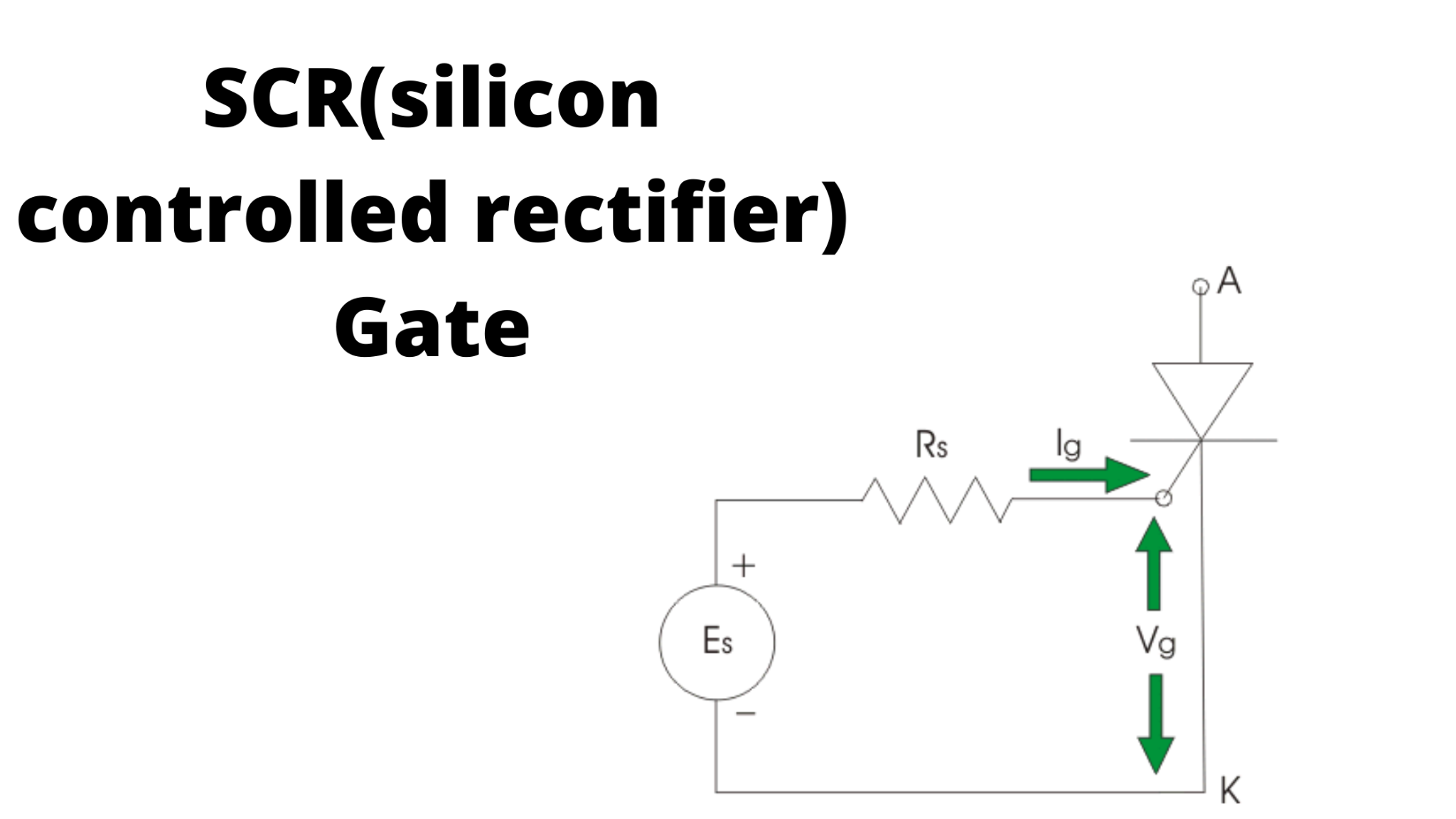November 2021,
Silicon Controlled Rectifier (SCR) Or Thyristor
It is a type of thyristor that is used for switching current. They are used as an alternative to permanent magnets or electromagnets. SCR thyristor, such as the triacs found in most AC power supplies, allow for quick and efficient control of electrical currents and voltages so you can provide power to the device where it’s needed most.
These thyristors are very simple, efficient semiconductor devices. SCR thyristor consists of a base, an aluminium oxide (or silicon dioxide) cathode and an insulated gate whose function is to control the flow of current through the device. During operation, the voltage applied to the gate is reduced as power is used to switch current in or out of the circuit.
The SCR(Silicon Controlled Rectifier) Gate
The transistor structure has become familiar because it enables us to use AC sources to drive AC loads. The AC source allows electrons to flow through a load resistance; however, this cannot be done without limitations.
The structure that allows electron flow is a diode. The area of a junction that allows current to flow is the PN junction, and the semiconductor is PN material.
The SCR transistor, however, does not have a PN junction. The SCR structure consists of a metal-oxide layer with an insulating layer between it and a metal gate electrode. A voltage is applied across the insulator from the gate to the metal-oxide layer by means of two leads. If enough voltage is applied across this structure, electrons will flow from source to drain through an external load resistor connected between them.
This is because the positive voltage on the gate attracts electrons. Electrons flow from source to drain when they are repelled by the negative voltage applied to the gate. By applying a positive voltage across the device, current is switched by silicon-oxide layers in response to voltages applied between its leads.
A SCR (Silicon Controlled Rectifier) Diode Structure
Various types of thyristor are available, but these can be classified into three groups: SCR thyristor, triac thyristor and ignitron thyristor. These devices differ in construction and operation because their functions are different.
The thyristor is a semiconductor-controlled rectifier. A rectifier is an electrical device that converts AC currents to DC currents, and the SCR thyristor is the most common type used for this purpose.
A diode conducts DC current in one direction only; therefore, it makes current flow only in one direction, which is why it’s called a rectifier. The SCR, however, allows current to flow in either direction. This allows for much more efficient switching of high currents than with diodes
Sophie Quirk writes about how these devices work and gives examples of some different types of uses for them.
SCR thyristor are often used in audio equipment to control the amount of voltage that is presented to the amplifier.
Another common use is in LED lighting, where current controlled by an SCR-type thyristor passes through one or more transformers (normally designed for low voltage) to deliver high frequencies (typically around 120 volts).
Triacs are also used in motor speed controllers. They allow you to turn a fan on and off at the right speed so the temperature inside of your home doesn’t rise or fall too fast. Adding a speed controller will cost about 10 dollars, while purchasing all new fans will cost you anywhere between 40-60 dollars.
How does it work?
Depending on the power supply, there are two major types of thyristor: series and parallel
Parallel thyristor: This is the most common type of thyristor in use today. It can be created by connecting two PN junctions together in series, creating a voltage divider.
This is why they are also called voltage dividers or voltage attenuators. They are used in applications that need to have a certain change in output voltage over time, such as dimmer switches or position indicators for fans or pumps.
Series thyristor: This type of thyristor has a high turn-on voltage, around 400 volts. It can be used in an H-bridge or in circuits that need to turn on and off suddenly, such as a shock absorber for a seatbelt.
AC Thyristor
These are much like parallel SCRs, except they are connected such that the gate and cathode terminals are connected together.
They can be turned off by applying less than half of their activation current when the gate and cathode leads are connected together through a resistor. In this way, the AC thyristor can be used in a circuit that needs to turn off in a controlled fashion.
This is a simplified schematic for a PN junction, but it tells us a lot about how the SCR works.
An SCR’s basic function is dependent on current flowing from source to drain, when triggered by the gate-to-cathode voltage reaching a certain value when positive with respect to source when forward biased. In operation, an SCR (Silicon Controlled Rectifier) requires less applied gate voltage than the corresponding JFET or bipolar transistor when it is in its cut-off state and much more when in its saturation state.
This happens because the depletion layer of a PN junction is much thin when Na+ ions from the gate are much less likely to reach the N-type material when their concentration is higher in Na+ than in N+.
The thinning of this depletion layer is what makes the p-n junction able to conduct current in a controlled way, because current flow depends on a difference in charge between either side of the p-n junction.
The SCR can be modeled as series connected PN junctions, each with a forward voltage drop of 0.6V and a negligible leakage current. In practice, SCRs have a small amount of leakage current but this is typically neglected unless there are significant signal frequency components from other circuit elements.
Characteristics Of A Thyristor Or SCR
- It may deal with high voltages, currents and power.
- The voltage drop across conducting SCR is small. This may reduce the power dissipation in the SCR.
- Easy to activate.
- Triggering circuits are simple.
- It may be protected with the help of a fuse.
- We will control the power delivered to the load.
- Forward voltage drop is low
- High-current switch
- Does not conduct the small signal to the base of a transistor or internal resistance until it’s triggered.
Conclusion
In this article, I gave you a quick introduction to what thyristor are, types of thyristor and uses of thyristor. I hope you find this article helpful. If you still have any doubt or query please let me know in the comment section. If you got something out of it, please consider sharing the article with others. Thank you!!
Frequently Asked Questions On Thyristor
What are the different types of thyristors I can use?
The SCR is one of many thyristor types. Other thyristor types, such as Silicon-controlled rectifiers, use various levels of doping to achieve their function.
You can control these elements with a pulse or a full wave rectified waveform, but they will only be triggered by a maximum amount of gate voltage and a suitable current level. In general, I’ll use the term “thyristor” whenever a circuit uses a SCR.
What is the benefit of using a thyristor over permanent magnet or electromagnets?
Permanent magnets have been used to create switches for a long time. They often have the disadvantage of being quite large and heavy, however they can produce a high-power switching action that is useful in applications such as machine tool controls.
The strength of the magnetic field is also fixed, so any added size or weight would result in an undesirable reduction in power efficiency. In contrast, thyristor allow you to get the same switching action from much less hardware and at lower voltages.
How is a thyristor different from a relay?
Relays are a type of electromechanical switch that can control the flow of power, but they have very high internal resistance and, if their connections are not perfectly clean, can cause arcing.
In contrast, thyristor have very low internal resistance and once triggered will pass the current through immediately. If the connections are not perfectly clean, there is a short delay before the current passes through. But this isn’t a problem in most applications because you will normally only apply a single pulse to the winding to trigger it.
Why to prefer SCR thyristor over other thyristors?
SCRs can handle much higher current than other thyristor types. This makes them ideal for high-power switching applications such as automotive systems and HVAC control. They can also be used to create a gate rectifier, which converts AC power to DC. Unlike bipolar transistors, thyristors provide a very high degree of control over the forward voltage drop, so you can set your output voltage precisely.
The drain-source current of SCRs is much lower than JFETs or BJTs, making them ideal for low-power circuits that need a low level of current flow. Finally, they’re already in widespread use and can be found in almost all electronic devices.



